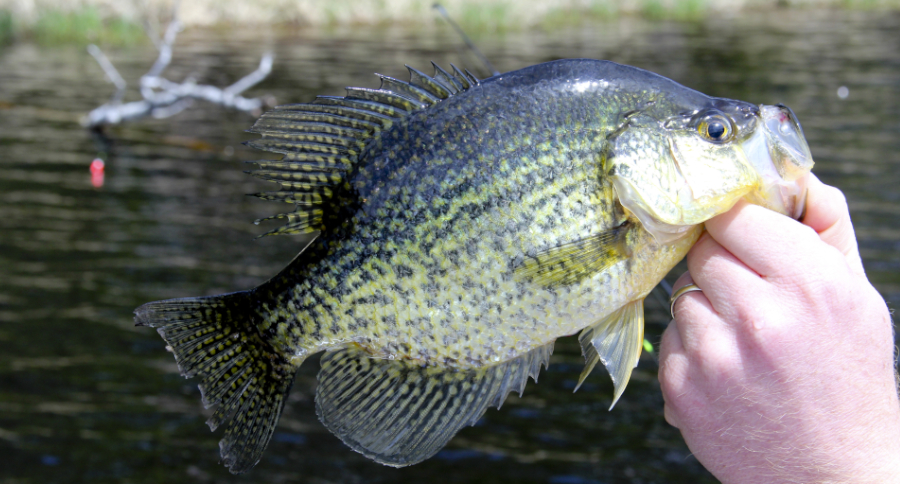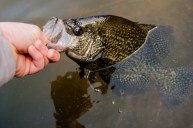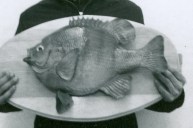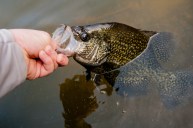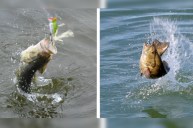The crappie is one of America's most beloved panfish.
The scrappy crappie is one of America's favorite freshwater fish. Not only are these game fish fun to catch at many different parts of the year, they also make for world class table fare. Some anglers will even go so far as to call this the tastiest freshwater game fish in America. We will let you be the judge of that. Today we will discuss this iconic member of the sunfish family in great depth.
We will tell you about the two species of crappie, what their behaviors are like, and we will give you some fishing tips to help you catch them your next time out.
These are just some of the many reasons these fish have developed such a devoted following with anglers!
Black crappie
This fish species has garnered up a ton of nicknames over the years. Papermouths, speckled bass, white perch, calico bass and more. All refer to the same animals. There are two distinct species of crappie and they are both part of the greater Centrarchidae family. From a taxonomy standpoint, they are in the same family as fish as the bluegill and largemouth bass. If you look closely enough, you can sort of see the similar features. There are two distinct species of crappie. The big difference is in their appearance. We will start with the black crappie, aka: Pomoxis nigromaclatus as it is known in the scientific community.
Colors vary, but black crappies usually have either a green or silvery body marked over by dark spots or blotches. One easy way to tell a white crappie from a black one is to look at the arrangement of these dark spots. On a white crappie, they are more likely to be a distinctive vertical bar pattern. The patterns on black crappies are more uniform and random. Another easy way to tell the two species apart is the top dorsal fine spines. There should be eight on a black crappie. This is sometimes the better way to tell the two apart because they often inhabit the same places and some clear water specimens can take on a much lighter appearance.
According to the U.S. Fish and Wildlife Service, these fish were originally native along the Atlantic coast south from Virginia to Florida. They were found across the southern United States all the way to Texas. The black crappie is also a commonly found fish in the Great Lakes and greater Mississippi River basin. It is worth noting that this is an incredibly hardy species and it has thrived after being transplanted to many other waters across the country over the years.
The black crappie is a schooling fish. Where you catch one, you are likely to catch others. They tend to hold on weed beds, brush piles, and other cover, even in deeper water. Whatever they can find that gives them some sense of security.
White crappie
Pomoxis annularis is the scientific name for the white crappie. We already covered part of this fish's description. The vertical bars are an obvious indicator the fish is not a black crappie. Look also at this fish's dorsal fin. There should be only six spines. That is a dead giveaway that you have a white crappie in the boat. The white crappie's range is nearly identical to the black crappie although it appears the white ones may have been introduced to more locations.
Both the black and white crappies have similar diets of freshwater crustaceans, minnows and small baitfish. The white crappie may be slightly hardier than the black variety in that they are not as picky about diet or habitat. You are usually more likely to find the white crappie hanging out in a variety of different depths in the water column throughout the day.
The white crappie is also more commonly found in shallow water than the black variety. They also do not seem to care about water clarity as much as black crappie, which tend to hang out in the clearest water they can find.
World record crappie
There is nothing that gets a crappie fishing enthusiast going quite like seeing a photo of a truly giant slab. Most crappies do not grow exceedingly large. A two-pounder is usually considered quite big in most areas of the country. Three pounders are uncommon, but not unheard of for either species. However, the International Game Fish Association recognizes two absolute giants as the all-tackle world records in their book.
The largest white crappie ever caught was a monstrous, 5 pound, 3-ounce giant caught by Fred Bright at Enid Dam in Mississippi. This is one of those long-standing records that has many angling enthusiasts wondering if it can ever be beaten at this point. Bright caught his huge fish all the way back in 1957. That is a long time for any world record to stand. Seems like it is overdue at this point doesn't it?
The black crappie record is a few ounces larger and is a little more recent. Lionel Ferguson caught his 5-pound, 7-ounce monster from Richeison Pond in Tennessee in 2018. The photos of the giant catch went instantly viral on social media and with good reason! This fish was the definition of the word "lunker." There was some confusion around this fish when it was caught. Some people thought it may be a hybrid of both a black and white crappie. Eventually it was confirmed to be a pure black crappie through genetic testing and Ferguson's name forever became a part of crappie fishing history.
How to catch crappie
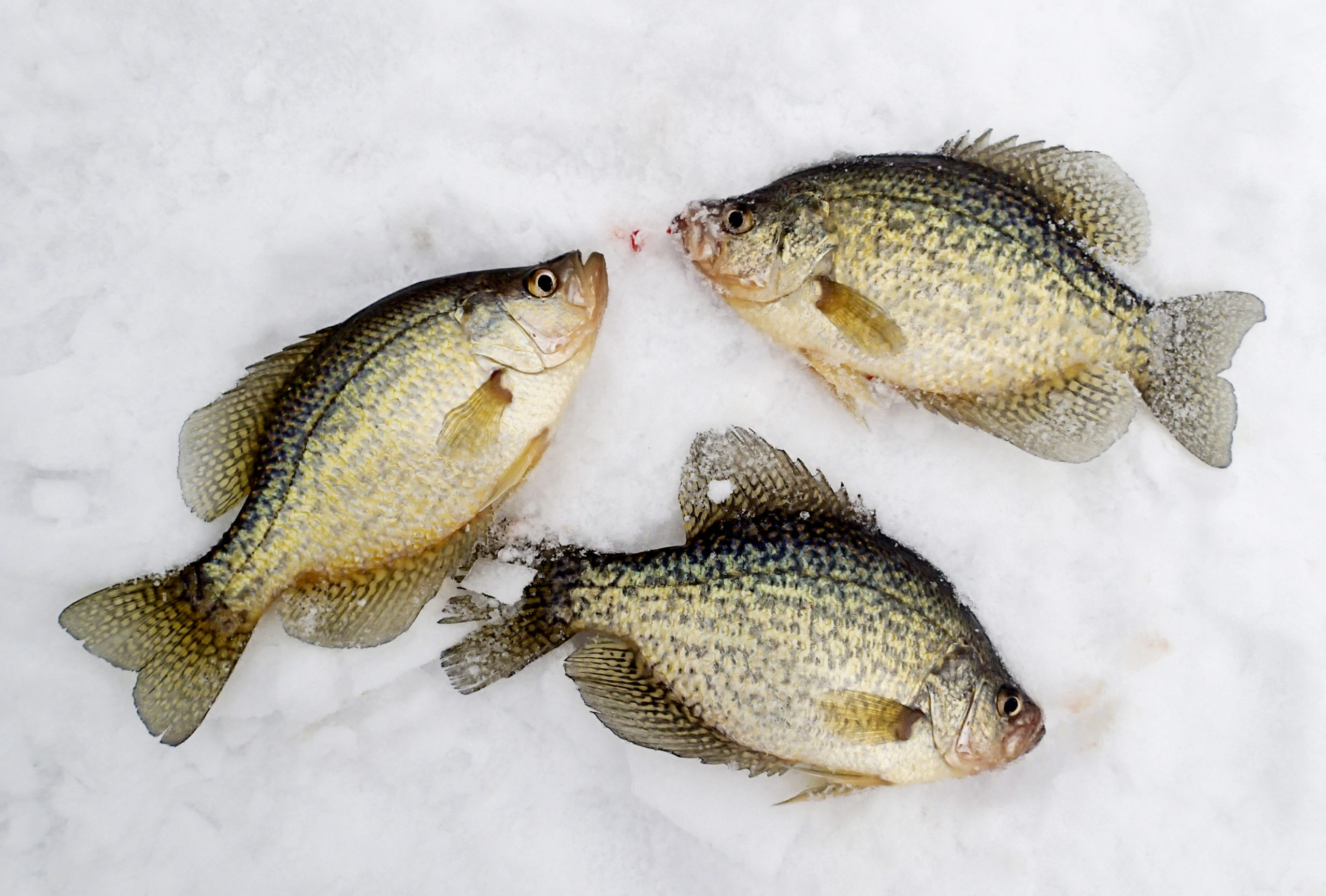
The toughest part of fishing for crappie is simply finding them. It helps to have good topo maps of the lake bed or electronics to help you locate schools of these fish, especially while ice fishing. Yes, winter crappie fishing can be just as much fun as catching them during the spring spawning season.
You do not need any fancy gear to catch them. A simple light spinning rig with light four to ten-pound monofilament line is perfect. You might want to air on the heavier side, not because of the size of the fish, but rather because of the potential for snags. Odds are you will snag something you don't intend while fishing standing timber or other structure the fish are holding on. Remember that most crappie love their cover. This will also aid you in locating them if you already know where that kind of structure is on your favorite water body.
Crappies respond well to light jigs in 1/32, 1/16 or 1/8-ounce sizes. These can be simple hair jigs or ones tipped with grubs. Slabs seem to respond especially well to curly tail grubs that mimic small baitfish. Jigs are a great way to catch a limit through the ice.
Depending on how aggressive they are, small spinnerbaits or crankbaits often work well too. These lures tend to excel in the spring months when the fish are fattening up for the spawn. Most expert crappie anglers agree that the spawn tends to happen when water temperatures hit the 50-60 degree mark. That is when you are going to start looking towards shallow water. For pre-spawn fish, start in around 10 feet of water and work your way shallower until you find them.
When the fish are suspended in deeper water, an old go-to presentation is to suspend live bait, mainly live minnows, beneath a slip bobber. Many big slabs find it impossible to resist a struggling baitfish on the end of the line and will swallow it up immediately.
For more outdoor content from Travis Smola, be sure to follow him on Twitter and check out his Geocaching and Outdoors with Travis YouTube channels.
NEXT: THE AXIS DEER AND HOW THEY'RE IMPACTING PARTS OF THE UNITED STATES
WATCH
